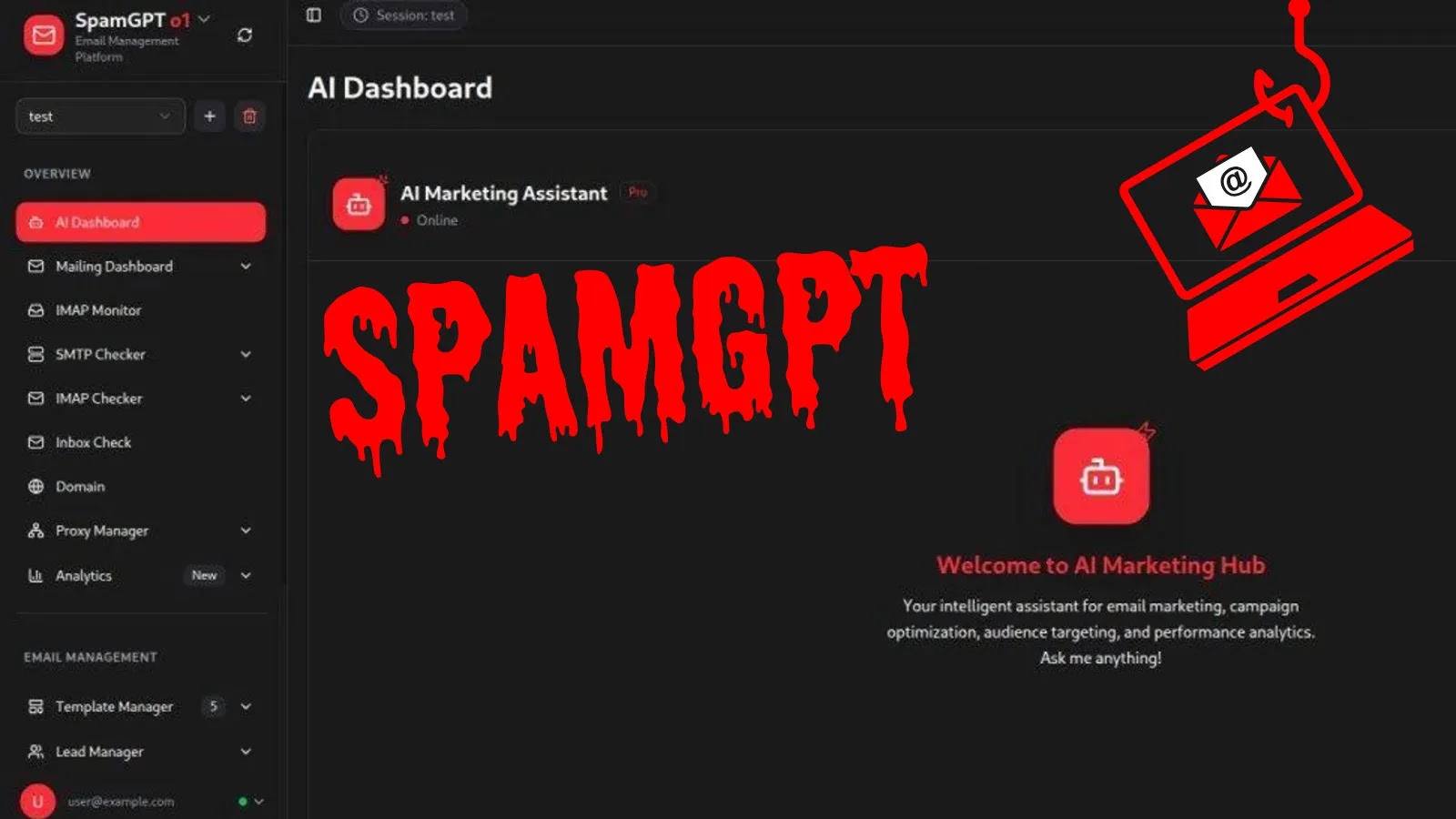
SpamGPT – AI-powered Attack Tool Used By Hackers For Massive Phishing Attack
The Rise of SpamGPT: AI-Powered Phishing Takes a Dangerous Leap Forward
In the evolving threat landscape, cybercriminals consistently refine their tactics. A new and particularly concerning development is the emergence of SpamGPT, a sophisticated cybercrime toolkit leveraging artificial intelligence to power massive and highly effective phishing campaigns. This “spam-as-a-service” platform, marketed on the dark web, automates nearly every facet of fraudulent email operations, significantly lowering the technical barriers for nefarious actors. Understanding SpamGPT’s capabilities and its impact on the phishing threat is critical for bolstering defensive strategies.
What is SpamGPT?
SpamGPT represents a significant advancement in phishing methodologies. Unlike traditional, labor-intensive phishing operations, SpamGPT integrates AI with the robust functionalities typically found in legitimate professional email marketing platforms. This combination allows for unprecedented scale and sophistication in attack execution. It’s designed to streamline the entire phishing lifecycle, from target identification to payload delivery, making it accessible even to less technically proficient individuals looking to launch large-scale attacks.
Key Capabilities and Operation
The core innovation of SpamGPT lies in its automation and AI-driven precision. It offers a comprehensive suite of features that essentially provide a plug-and-play solution for cybercriminals. Some of its notable capabilities include:
- Automated Email Generation: Leveraging AI, SpamGPT can craft highly convincing and contextually relevant phishing emails. This eliminates the need for manual linguistic efforts, reducing grammatical errors and improving the overall legitimacy of the malicious communications.
- Targeted Campaigns: The platform likely incorporates data aggregation and analysis features, allowing attackers to segment targets and tailor phishing attempts for maximum effectiveness. This moves beyond spray-and-pray tactics towards more refined social engineering.
- High Volume Delivery: By emulating the infrastructure of legitimate email marketing services, SpamGPT can send out millions of phishing emails rapidly, bypassing many standard email security filters that might flag lower-volume, less sophisticated attacks.
- Campaign Management: Users of SpamGPT can manage multiple campaigns simultaneously, track engagement, and even adapt strategies based on real-time feedback, much like legitimate marketing professionals. This includes features for managing bounce rates, open rates, and click-through rates.
- Evading Detection: The use of AI not only aids in crafting compelling emails but also in techniques designed to avoid sandbox analysis and signature-based detection, making it harder for traditional security systems to identify and block these attacks.
The Impact of AI in Phishing Attacks
The integration of AI, as seen with SpamGPT, fundamentally alters the landscape of phishing. It democratizes sophisticated attack capabilities, enabling a wider range of threat actors to launch highly effective campaigns. This technology:
- Lowers the Barrier to Entry: Less skilled individuals can now initiate large-scale, complex phishing operations that previously required significant technical expertise.
- Increases Attack Volume and Velocity: AI automates tasks that were once manual, allowing for an exponential increase in the number of attacks launched daily.
- Enhances Realism and Evasion: AI can generate more convincing subject lines, body content, and even mimic writing styles, making emails harder to distinguish from legitimate communications. It can also help modify attack patterns dynamically to evade detection.
- Escalates Financial and Reputational Damage: More effective phishing translates directly to higher rates of successful breaches, leading to data theft, ransomware infections, and significant financial losses for organizations and individuals.
Remediation Actions and Defensive Strategies
Defending against AI-powered phishing tools like SpamGPT requires a multi-layered approach that combines technological solutions with robust human training. There is no specific CVE associated with SpamGPT itself, as it is a toolkit, not a vulnerability in a specific software product. However, the attacks it facilitates exploit common human vulnerabilities and weaknesses in email security. Organizations must focus on:
- Advanced Email Security Gateways (ESG): Implement and continuously update ESGs with advanced threat protection capabilities, including AI-driven anomaly detection, sandboxing, and URL reputation analysis. Examples include Proofpoint, Mimecast, and Microsoft Defender for Office 365.
- Employee Security Awareness Training: Regular and interactive training is paramount. Teach employees to recognize phishing cues, even subtle ones. Emphasize verification processes for unusual requests and the importance of reporting suspicious emails. Simulating phishing attacks can be highly effective.
- Multi-Factor Authentication (MFA): Implement MFA across all critical systems and applications. Even if credentials are stolen via a phishing attack, MFA significantly limits an attacker’s ability to gain unauthorized access.
- Principle of Least Privilege: Restrict user access to only the resources absolutely necessary for their job functions. This minimizes the potential damage if an account is compromised.
- Strong Incident Response Plan: Develop and regularly drill an incident response plan specifically for phishing attacks and account compromises. Fast detection and containment are crucial.
- DNS Security and DMARC/DKIM/SPF Implementation: Properly configure DMARC, DKIM, and SPF records to prevent email spoofing and ensure that emails appearing to originate from your domain are legitimate. Services like dmarcian can assist.
Recommended Tools for Phishing Defense
| Tool Name | Purpose | Link |
|---|---|---|
| Proofpoint Email Protection | Advanced threat protection against email-borne threats, including phishing and spam. | Proofpoint |
| Mimecast Email Security | Comprehensive email security, archiving, and continuity services. | Mimecast |
| Microsoft Defender for Office 365 | Integrated email security and threat protection for Microsoft 365 environments. | Microsoft Security |
| KnowBe4 Security Awareness Training | User training platform with simulated phishing attacks and educational modules. | KnowBe4 |
| SpamAssassin | Open-source tool to identify and block spam emails (often integrated into mail servers). | SpamAssassin |
Conclusion
SpamGPT signifies a concerning evolution in cybercriminal capabilities, demonstrating how AI is being weaponized to amplify the scale and sophistication of phishing attacks. Its “spam-as-a-service” model democratizes access to advanced attack tools, posing a significant challenge to organizations and individuals alike. Proactive defense mechanisms, combining robust technical controls with continuous security awareness training, are no longer optional but essential. Staying informed about emerging threats like SpamGPT allows us to adapt our defenses and minimize the risk of becoming another successful phishing statistic.





